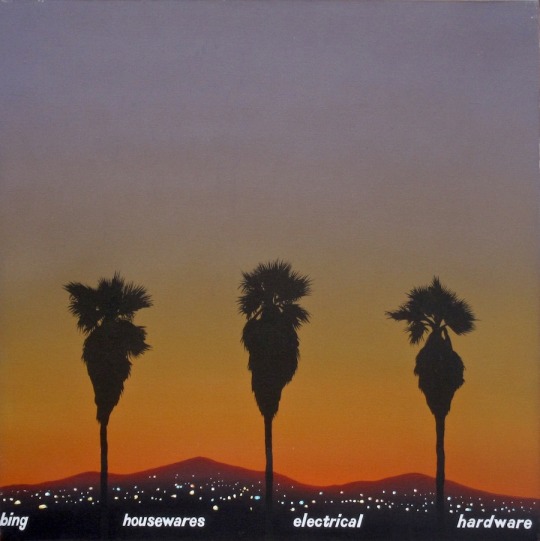#Analysis:
Explore tagged Tumblr posts
Text
Rare Six-Planet Star System Discovery is Music to Astronomers’ Ears - Technology Org
New Post has been published on https://thedigitalinsider.com/rare-six-planet-star-system-discovery-is-music-to-astronomers-ears-technology-org/
Rare Six-Planet Star System Discovery is Music to Astronomers’ Ears - Technology Org
A rare star system with six exoplanets has been discovered with an architecture unchanged for billions of years.
Exoplanet – illustrative photo. Image credit: Pixabay (Free Pixabay license)
The star, HD110067, that is 100 light-years away in the northern constellation of Coma Berenices, has been perplexing researchers for years. Now scientists, including those at the University of Warwick, have revealed the true architecture of this unusual system using NASA and ESA spacecrafts.
The first indication of planets orbiting the strange star system came in 2020, when NASA’s Transiting Exoplanet Survey Satellite (TESS) detected dips in the star’s brightness that suggested planets were passing in between the star and the TESS spacecraft. A preliminary analysis revealed two possible planets. One with a year (or an orbital period – the time it takes to complete one orbit around the star) of 5.64 days and another with an unknown period at the time.
Two years later, TESS observed the same star again. Analysing all data ruled out the original interpretation but presented two additional possible planets, changing the picture of the planetary system completely.
youtube
Much was still unknown about the planetary system, and that was when Rafael Luque of the University of Chicago and scientists across the world – including those at the University of Warwick – joined the investigation. They used data from the European Space Agency’s (ESA) CHaracterising ExOPlanet Satellite (CHEOPS), hoping to determine the orbital periods of these faraway planets.
The CHEOPS data was key in confirming a third planet in the system and the team had found the key to unlocking the whole system. It was now clear that the three planets were in a pattern of orbits known as an ‘orbital resonance’. For example, an outer planet takes 20.52 days to orbit, which is extremely close to 1.5 times the orbital period of the next planet with 13.67 days. This in turn is almost exactly 1.5 times the orbital period of the inner planet, with 9.11 days.
Thomas Wilson, Department of Physics, University of Warwick, said: “By establishing this pattern of planet orbits, we were able to predict other orbits of planets we hadn’t yet detected. From this we lined up previously unexplained dips in starlight observed by CHEOPS and discovered three additional planets with longer orbits. This was only possible with the crucial CHEOPS data.”
Orbitally resonant systems are extremely important to find because they tell astronomers about the formation and subsequent evolution of the planetary system. Planets around stars tend to form in resonance but can easily have their orbits thrown around.
For example, a very massive planet, a close encounter with a passing star, or a giant impact event can all disrupt the careful balance. As a result, many of the multi-planet systems known to astronomers are not in resonance meaning that multi-planet systems preserving their resonance are rare.
“We think only about one percent of all systems stay in resonance,�� explains Rafael Luque. That why HD110067 is special and invites further study. “It shows us the pristine configuration of a planetary system that has survived untouched.”
“As our science team puts it: CHEOPS is making outstanding discoveries sound ordinary. Out of only three known six-planet resonant systems, this is now the second one found by CHEOPS, and in only three years of operations,” says Maximilian Günther, ESA project scientist for CHEOPS.
HD110067 is the brightest known system with four or more planets. Since those planets are all sub-Neptune-sized with likely larger atmospheres, it makes them ideal candidates for studying the composition of their atmospheres using the NASA/ESA/CSA James Webb Space Telescope and the ESA’s future Ariel telescope. Whereas ESA’s upcoming PLATO telescope, due to be launched in 2026, within which the University of Warwick is playing a leading role, could find planets in this system with even longer years.
Thomas Wilson added: “All of these planets have large atmospheres – similar to Uranus or Neptune – which makes them perfect for observation with JWST. It would be fascinating to test if these planets are rocky like Earth or Venus but with larger atmospheres – solid surfaces potentially with water. However, they are all much hotter than Earth, 170-530 degrees Celsius, which would make it very difficult for life to exist.”
“A resonant sextuplet of sub-Neptunes transiting the bright star HD 110067” by R. Luque et al. is published in Nature today. DOI 10.1038/s41586-023-06692-3
Source: University of Warwick
You can offer your link to a page which is relevant to the topic of this post.
#Analysis#architecture#Astronomy news#coma#Coma Berenices#Composition#data#Discoveries#ears#earth#ESA#European Space Agency#Evolution#exoplanet#Exoplanets#Featured Space news#form#Future#it#James Webb Space Telescope#jwst#life#Light#Link#Music#NASA#nature#One#orbit#Other
3 notes
·
View notes
Text
THIS is how you analyse a character. I will keep playing devil's advocate for this guy to those who just say he was born evil. No, he was not. He was a child.
Donquixote Doflamingo’s reasons and motivation
His motivation is unexpectedly noble for a guy who has suffered brutal violence and was raised by the ruthless killers. We can look into his head for the first time when he has an emotional outburst over the situation in Marineford. When Doffy’s emotions started to outpour, he verbally attacked the World Government.

海賊が悪!!? 海軍が正義!!? そんなものはいくらでも塗り替えられてきた…!!! // Pirates are evil?! The Marines are justice?! Such things have been changed as many times as you want!!!

“平和"を知ねェ子供共と"戦争"を知ねェ子供共との価値観が違う!!! 頂点に立つ者が善悪を塗り替える!!! 今この場所こそ中立だ!!! 正義は勝つって!? そりゃそうだろ! 勝者だけが正義だ!!!! // Brats who don’t know peace and brats who don’t know war have different values!!! Those at the top decide what is good and what is evil!!! This place is neutral ground right now!!! Justice will prevail, you say?! Of course it will! Whoever prevails is just!!!!
A huge inscription "The Marines” that is shown when Doflamingo is talking about the nature of justice kinda implies.
Justice is the favorite word of the Marines, the World Government army. He directly accuses the Marines of being not very just and defending the world order that brings people suffering. In the pictures from his head, the different values he mentioned are illustrated by the attitude to food. The child soldiers are happy about the canned food they have found (if there were meat on the skeleton, they would probably have gnawed it too), and the rich girl does not want to eat vegetables. Why this particular example is given becomes clear later.



These are the elite officers of the Donquixote Family as children. As can be seen, they all were destitute. The rest of the Donquixote Family members as children are also depicted in a similar way. Doflamingo felt like saying pirates are not always evil and the Marines aren’t always this shining beacon of justice, because sometimes piracy is a lesser evil than…

妻が焼き殺された…!! どうでもいいんどろお前らにゃ // My wife was burned to death!! It’s nothing to you, right?!
お前らに納める[ 天 上 金 ]のせいで…!! 国が飢餓で滅んだんだ……!!! お前ら腹へったことあるか!? みんな骨と皮になって死んだよ!!! // Because of the Celestial Tribute we have to pay, the country has been ravaged by famine!!! Have you ever had nothing to eat?! Everyone died leaving only a bag of bones!!!
...than death from starvation.
At the time of the Marineford Arc, it was not yet fully revealed how terrible the rule of the WG is, but, to put it bluntly, it turned the world into a giant Nazi camp.
Keep reading
#Donquixote Doflamingo#character analysis#one piece#I love him as a person#me too op#I love this clad-pink man too
405 notes
·
View notes
Text
MCLAREN REVIEW 1: HAND-PAINTED ABSTRACTIONS
Before he became the abstract animator we know and love, Norman McLaren was an artist studying set design at the Glasgow School of Art. Then his life changed when he laid eyes on Oskar Fischinger’s animated short film Study No. 7[i]. It was the images of abstract shapes moving in tune to the Braham’s’ Hungarian Dance No. 5 that he had found “the medium to express my feelings about music.”[ii] This led him to join a group of experimental artists in the Kinecraft Society[iii]. “We realized here was a new area not really being explored just been invented about 20 or 30 years ago”[iv] McLaren later said.
So, McLaren collaborated with Stewart McAllister to make their debut abstract short film Hand-Painted Abstraction. Sadly, the original print was worn beyond repair and McLaren didn’t make an extra print.[1] But from what I could gather from research, this film showed early signs of his trademark techniques.
It’s his first film and already he’s applying his trademark technique of drawing/painting on the film strip. The funny thing is this was first used out of necessity. Despite being a filmmaking club, the Kinecraft Society lacked one thing necessary make movies: a camera. All they had was a 35 mm projector and used commercial films. (pg. 33)[v] But as the old saying goes, “Necessity is the mother of invention.” “I begged an old print of a commercial film,” he recalls “soaked it in the family bathtub for about two weeks – so no one could have a bath for two weeks – to get off the emulsion, to make it clear.”[vi]
Then he and McAllister painted on the film using “a very limited range of semi-transparent dyes, shoe-polish and India ink.” Well, they tried drawing in every single frame. But they got first-hand experience to the tediousness that comes with modifying images frame by frame to create movement (Pg. 33.)[vii] As YouTuber Alessandro Sabbadini points out “The film frame was tiny. A mere 16 or 35 mm across. And drawing onto such a tiny area meant that the image could only be very simple.”[viii] The result is what the technical notes describes as “The very rapid fluctuations of patterns and the very fast music created an acceptable random synchronization.” (Pg. 20)[ix] I imagine McLaren would eventually develop the self-discipline needed to make animated films.
The lack of existing film makes it impossible to review this short. But McLaren’s recollections indicated it wasn’t his best work. “It was like an endless band of effects.” He stated. “It had no climax or conclusion.” While his Technical notes states the film was “designed to be accompanied by discs of any fast jazz or popular music,” it also points out that it had a “total disregard for the frame line or for synchronization with the music.” Though McLaren later said that he and McAllister found that “when we used very fast popular music of the day, the tempo of the music was so fast and what was in front of the eye was so fast, that there was more than a 50% feeling of synchronization.”[x]
Of course, there’s no shame in someone’s first student film not being a masterpiece. This was an early period for movies, and it was less than 10 years ago that we got full length talking pictures. Besides, this would be a moment in a filmmaker’s life when they’re figuring out their style. I imagine that McLaren would be imitating Fischinger’s style along with that of fellow influences like Emile Cohl and Alexander Alexeieff. Again, no shame in this. Student filmmakers aren’t going to have it all figured out on their first try and trying out the styles of other filmmakers can give them clarity on why the other filmmaker’s style works.
Hand-Painted Abstractions is a tragic reminder of the many early films lost forever to history due to negligence. It is a shame because this film would offer a glimpse of how McLaren grew as a filmmaker.
[1] Let that be a lesson, kids; always make a copy of your work.
[i] Study no. 7. (1931). [DVD]. Germany.
[ii] A National Film Board of Canada production in association with the Canadian Broadcasting Corporation and Channel Four Television. (1990). Creative process: Norman McLaren. Ottawa?
[iii] Dobson, N. (2019). Norman McLaren: Between the frames. Bloomsbury Academic.
[iv] A National Film Board of Canada production in association with the Canadian Broadcasting Corporation and Channel Four Television. (1990). Creative process: Norman McLaren. Ottawa?
[v] DODSON, T. (2017). Film work of Norman McLaren. JOHN LIBBEY & CO LTD.
[vi] British Broadcasting Corporation. (1972). the eye hears and the ear sees [DVD].
[vii] DODSON, T. (2017). Film work of Norman McLaren. JOHN LIBBEY & CO LTD.
[viii] YouTube. (2021). What About Norman McLaren? YouTube. Retrieved July 1, 2023, from https://www.youtube.com/watch?v=RhR2OCLqZfM.
[ix] McLaren, N. (2006). Technical notes. National Film Board of Canada. http://www3.nfb.ca/archives_mclaren/notech/NT04EN.pdf
[x] A National Film Board of Canada production in association with the Canadian Broadcasting Corporation and Channel Four Television. (1990). Creative process: Norman McLaren. Ottawa?
#Hand painted abstractions#norman mclaren#random richards reviews#random richards#movie review#analysis#film analysis#national film board of canada#nfb#Creative Process#What about Norman McLaren#Film Work of Norman McLaren#Terrence Dobson#The Eye hears the ear sees#Study Number 7#Stewart McAllister#Oskar Fischinger
0 notes
Photo

Read Full recipe here 👉⋆🦋 {{Hawaiian Roll French Toast}}🦋⋆
#moodboard#hawaiianrollfrenchtoast#Recipe#mood#Homemade#cozy#Easy recipes#food photography#Baking#Food#healthy eating#FoodPorn#Delicious#pizza#vegan#png#cute#explore#tasty#chicken#italy#france#japan#america#aesthetic
455 notes
·
View notes
Photo

PORTO ROCHA
1K notes
·
View notes
Text
A long but soooo interesting post ! Oh, thr parallels between Hancock and Doflamingo are so interesting !
Donquixote Doflamingo’s reasons and motivation
His motivation is unexpectedly noble for a guy who has suffered brutal violence and was raised by the ruthless killers. We can look into his head for the first time when he has an emotional outburst over the situation in Marineford. When Doffy’s emotions started to outpour, he verbally attacked the World Government.

海賊が悪!!? 海軍が正義!!? そんなものはいくらでも塗り替えられてきた…!!! // Pirates are evil?! The Marines are justice?! Such things have been changed as many times as you want!!!

“平和"を知ねェ子供共と"戦争"を知ねェ子供共との価値観が違う!!! 頂点に立つ者が善悪を塗り替える!!! 今この場所こそ中立だ!!! 正義は勝つって!? そりゃそうだろ! 勝者だけが正義だ!!!! // Brats who don’t know peace and brats who don’t know war have different values!!! Those at the top decide what is good and what is evil!!! This place is neutral ground right now!!! Justice will prevail, you say?! Of course it will! Whoever prevails is just!!!!
A huge inscription "The Marines” that is shown when Doflamingo is talking about the nature of justice kinda implies.
Justice is the favorite word of the Marines, the World Government army. He directly accuses the Marines of being not very just and defending the world order that brings people suffering. In the pictures from his head, the different values he mentioned are illustrated by the attitude to food. The child soldiers are happy about the canned food they have found (if there were meat on the skeleton, they would probably have gnawed it too), and the rich girl does not want to eat vegetables. Why this particular example is given becomes clear later.



These are the elite officers of the Donquixote Family as children. As can be seen, they all were destitute. The rest of the Donquixote Family members as children are also depicted in a similar way. Doflamingo felt like saying pirates are not always evil and the Marines aren’t always this shining beacon of justice, because sometimes piracy is a lesser evil than��

妻が焼き殺された…!! どうでもいいんどろお前らにゃ // My wife was burned to death!! It’s nothing to you, right?!
お前らに納める[ 天 上 金 ]のせいで…!! 国が飢餓で滅んだんだ……!!! お前ら腹へったことあるか!? みんな骨と皮になって死んだよ!!! // Because of the Celestial Tribute we have to pay, the country has been ravaged by famine!!! Have you ever had nothing to eat?! Everyone died leaving only a bag of bones!!!
...than death from starvation.
At the time of the Marineford Arc, it was not yet fully revealed how terrible the rule of the WG is, but, to put it bluntly, it turned the world into a giant Nazi camp.
Afficher davantage
#Donquixote Doflamingo#character analysis#Op meta#one piece#one piece meta#boa hancock#such an interesting villain
405 notes
·
View notes
Photo

Legendary Boulder ~ WrestlerCheetah
Next sketch for cheetahgirlmuscles Another entry on the Mia cosplaying as Guilty Gear characters book~ I hope you like it
85 notes
·
View notes
Photo

(vía Another America 50 by Phillip Toledano)
79 notes
·
View notes
Text
don’t call me whiny baby if you didn’t care about my whiny baby feelings already, which you didn’t care about!!! shocker!!!
54 notes
·
View notes
Quote
もともとは10年ほど前にTumblrにすごくハマっていて。いろんな人をフォローしたらかっこいい写真や色が洪水のように出てきて、もう自分で絵を描かなくて良いじゃん、ってなったんです。それで何年も画像を集めていって、そこで集まった色のイメージやモチーフ、レンズの距離感など画面構成を抽象化して、いまの感覚にアウトプットしています。画像の持つ情報量というものが作品の影響になっていますね。
映画『きみの色』山田尚子監督×はくいきしろい対談。嫉妬し合うふたりが語る、色と光の表現|Tokyo Art Beat
155 notes
·
View notes
Photo



No one wants to be here and no one wants to leave, Dave Smith (because)
111 notes
·
View notes
Text
Top 10 AI Tools for Embedded Analytics and Reporting (May 2025)
New Post has been published on https://thedigitalinsider.com/top-10-ai-tools-for-embedded-analytics-and-reporting-may-2025/
Top 10 AI Tools for Embedded Analytics and Reporting (May 2025)
Embedded analytics refers to integrating interactive dashboards, reports, and AI-driven data insights directly into applications or workflows. This approach lets users access analytics in context without switching to a separate BI tool. It’s a rapidly growing market – valued around $20 billion in 2024 and projected to reach $75 billion by 2032 (18% CAGR).
Organizations are embracing embedded analytics to empower end-users with real-time information. These trends are fueled by demand for self-service data access and AI features like natural language queries and automated insights, which make analytics more accessible.
Below we review top tools that provide AI-powered embedded analytics and reporting. Each tool includes an overview, key pros and cons, and a breakdown of pricing tiers.
AI Tools for Embedded Analytics and Reporting (Comparison Table)
AI Tool Best For Price Features Explo Turnkey, white-label SaaS dashboards Free internal · embed from $795/mo No-code builder, Explo AI NLQ, SOC 2/HIPAA ThoughtSpot Google-style NL search for data in apps Dev trial free · usage-based quote SpotIQ AI insights, search & Liveboards embed Tableau Embedded Pixel-perfect visuals & broad connectors $12–70/user/mo Pulse AI summaries, drag-drop viz, JS API Power BI Embedded Azure-centric, cost-efficient scaling A1 capacity from ~$735/mo NL Q&A, AutoML visuals, REST/JS SDK Looker Governed metrics & Google Cloud synergy Custom (≈$120k+/yr) LookML model, secure embed SDK, BigQuery native Sisense OEMs needing deep white-label control Starter ≈$10k/yr · Cloud ≈$21k/yr ElastiCube in-chip, NLQ, full REST/JS APIs Qlik Associative, real-time data exploration $200–2,750/mo (capacity-based) Associative engine, Insight Advisor AI, Nebula.js Domo Everywhere Cloud BI with built-in ETL & sharing From ~$3k/mo (quote) 500+ connectors, alerts, credit-based scaling Yellowfin BI Data storytelling & flexible OEM pricing Custom (≈$15k+/yr) Stories, Signals AI alerts, multi-tenant Mode Analytics SQL/Python notebooks to embedded reports Free · Pro ≈$6k/yr Notebooks, API embed, Visual Explorer
(Source: Explo)
Explo is an embedded analytics platform designed for product and engineering teams to quickly add customer-facing dashboards and reports to their apps. It offers a no-code interface for creating interactive charts and supports white-labeled embedding, so the analytics blend into your product’s UI.
Explo focuses on self-service: end-users can explore data and even build ad hoc reports without needing developer intervention. A standout feature is Explo AI, a generative AI capability that lets users ask free-form questions and get back relevant charts automatically.
This makes data exploration as easy as typing a query in natural language. Explo integrates with many databases and is built to scale from startup use cases to enterprise deployments (it’s SOC II, GDPR, and HIPAA compliant for security).
Pros and Cons
Drag-and-drop dashboards—embed in minutes
Generative AI (Explo AI) for NLQ insights
Full white-label + SOC 2 / HIPAA compliance
Young platform; smaller community
Costs rise with large end-user counts
Cloud-only; no on-prem deployment
Pricing: (Monthly subscriptions – USD)
Launch – Free: Internal BI use only; unlimited internal users/dashboards.
Growth – from $795/month: For embedding in apps; includes 3 embedded dashboards, 25 customer accounts.
Pro – from $2,195/month: Advanced embedding; unlimited dashboards, full white-label, scales with usage.
Enterprise – Custom: Custom pricing for large scale deployments; includes priority support, SSO, custom features.
Visit Explo →
ThoughtSpot is an AI-driven analytics platform renowned for its search-based interface. With ThoughtSpot’s embedded analytics, users can type natural language queries (or use voice) to explore data and instantly get visual answers.
This makes analytics accessible to non-technical users – essentially a Google-like experience for your business data. ThoughtSpot’s in-memory engine handles large data volumes, and its AI engine (SpotIQ) automatically finds insights and anomalies.
For embedding, ThoughtSpot provides low-code components and robust REST APIs/SDKs to integrate interactive Liveboards (dashboards) or even just the search bar into applications. It’s popular for customer-facing analytics in apps where end-users need ad-hoc querying ability.
Businesses in retail, finance, and healthcare use ThoughtSpot to let frontline employees and customers ask data questions on the fly. The platform emphasizes ease-of-use and fast deployment, though it also offers enterprise features like row-level security and scalability across cloud data warehouses.
Pros and Cons
Google-style NL search for data
SpotIQ AI auto-surfaces trends
Embeds dashboards, charts, or just the search bar
Enterprise-grade pricing for SMBs
Limited advanced data modeling
Setup needs schema indexing expertise
Pricing: (Tiered, with consumption-based licensing – USD)
Essentials – $1,250/month (billed annually): For larger deployments; increased data capacity and features.
ThoughtSpot Pro: Custom quote. Full embedding capabilities for customer-facing apps (up to ~500 million data rows).
ThoughtSpot Enterprise: Custom quote. Unlimited data scale and enterprise SLA. Includes multi-tenant support, advanced security, etc.
Visit ThoughtSpot →
Tableau (part of Salesforce) is a leading BI platform known for its powerful visualization and dashboarding capabilities. Tableau Embedded Analytics allows organizations to integrate Tableau’s interactive charts and reports into their own applications or websites.
Developers can embed Tableau dashboards via iFrames or using the JavaScript API, enabling rich data visuals and filtering in-app. Tableau’s strength lies in its breadth of out-of-the-box visuals, drag-and-drop ease for creating dashboards, and a large user community.
It also has introduced AI features – for example, in 2024 Salesforce announced Tableau Pulse, which uses generative AI to deliver automated insights and natural language summaries to users. This augments embedded dashboards with proactive explanations.
Tableau works with a wide range of data sources and offers live or in-memory data connectivity, ensuring that embedded content can display up-to-date info. It’s well-suited for both internal embedded use (e.g. within an enterprise portal) and external customer-facing analytics, though licensing cost and infrastructure must be planned accordingly.
Pros and Cons
Market-leading visual library
New “Pulse” AI summaries & NLQ
Broad data connectors + massive community
License cost balloons at scale
Requires Tableau Server/Cloud infrastructure
Styling customization via JS API only
Pricing: (Subscription per user, with role-based tiers – USD)
Creator – $70 per user/month: Full authoring license (data prep, dashboard creation). Needed for developers building embedded dashboards.
Explorer – $35 per user/month: For users who explore and edit limited content. Suitable for internal power users interacting with embedded reports.
Viewer – $12 per user/month: Read-only access to view dashboards. For end viewers of embedded analytics.
Visit Tableau →
Microsoft Power BI is a widely-used BI suite, and Power BI Embedded refers to the Azure service and APIs that let you embed Power BI visuals into custom applications. This is attractive for developers building customer-facing analytics, as it combines Power BI’s robust features (interactive reports, AI visuals, natural language Q&A, etc.) with flexible embedding options.
You can embed full reports or individual tiles, control them via REST API, and apply row-level security for multi-tenant scenarios. Power BI’s strengths include tight integration with the Microsoft ecosystem (Azure, Office 365), strong data modeling (via Power BI Desktop), and growing AI capabilities (e.g. the Q&A visual that allows users to ask questions in plain English).
Pros and Cons
Rich BI + AI visuals (NL Q&A, AutoML)
Azure capacity pricing scales to any user base
Deep Microsoft ecosystem integration
Initial setup can be complex (capacities, RLS)
Devs need Power BI Pro licenses
Some portal features absent in embeds
Pricing: (Azure capacity-based or per-user – USD)
Power BI Pro – $14/user/month: Enables creating and sharing reports. Required for developers and any internal users of embedded content.
Power BI Premium Per User – $24/user/month: Enhanced features (AI, larger datasets) on a per-user basis. Useful if a small number of users need premium capabilities instead of a full capacity.
Power BI Embedded (A SKUs) – From ~$735/month for A1 capacity (3 GB RAM, 1 v-core). Scales up to ~$23,500/month for A6 (100 GB, 32 cores) for high-end needs. Billed hourly via Azure, with scale-out options.
Visit Power BI →
Looker is a modern analytics platform now part of Google Cloud. It is known for its unique data modeling layer, LookML, which lets data teams define business metrics and logic centrally.
For embedded analytics, Looker provides a robust solution: you can embed interactive dashboards or exploratory data tables in applications, leveraging the same Looker backend. One of Looker’s core strengths is consistency – because of LookML, all users (and embedded views) use trusted data definitions, avoiding mismatched metrics.
Looker also excels at integrations: it connects natively to cloud databases (BigQuery, Snowflake, etc.), and because it’s in the Google ecosystem, it integrates with Google Cloud services (permissions, AI/ML via BigQuery, etc.).
Pros and Cons
LookML enforces single source of truth
Secure embed SDK + full theming
Tight BigQuery & Google AI integration
Premium six-figure pricing common
Steep LookML learning curve
Visuals less flashy than Tableau/Power BI
Pricing: (Custom quotes via sales; example figures)
Visit Looker →
Sisense is a full-stack BI and analytics platform with a strong focus on embedded analytics use cases. It enables companies to infuse analytics into their products via flexible APIs or web components, and even allows building custom analytic apps.
Sisense is known for its ElastiCube in-chip memory technology, which can mash up data from multiple sources and deliver fast performance for dashboards. In recent years, Sisense has incorporated AI features (e.g. NLQ, automated insights) to stay competitive.
A key advantage of Sisense is its ability to be fully white-labeled and its OEM-friendly licensing, which is why many SaaS providers choose it to power their in-app analytics. It offers both cloud and on-premises deployment options, catering to different security requirements.
Sisense also provides a range of customization options: you can embed entire dashboards or individual widgets, and use their JavaScript library to deeply customize look and feel. It’s suited for organizations that need an end-to-end solution – from data preparation to visualization – specifically tailored for embedding in external applications.
Pros and Cons
ElastiCube fuses data fast in-memory
White-label OEM-friendly APIs
AI alerts & NLQ for end-users
UI learning curve for new users
Quote-based pricing can be steep
Advanced setup often needs dev resources
Pricing: (Annual license, quote-based – USD)
Starter (Self-Hosted) – Starts around $10,000/year for a small deployment (few users, basic features). This would typically be an on-prem license for internal BI or limited OEM use.
Cloud (SaaS) Starter – ~$21,000/year for ~5 users on Sisense Cloud (cloud hosting carries ~2× premium over self-host).
Growth/Enterprise OEM – Costs scale significantly with usage; mid-range deployments often range $50K-$100K+ per year. Large enterprise deals can reach several hundred thousand or more if there are very high numbers of end-users.
Visit Sisense →
Qlik is a long-time leader in BI, offering Qlik Sense as its modern analytics platform. Qlik’s embedded analytics capabilities allow you to integrate its associative data engine and rich visuals into other applications.
Qlik’s differentiator is its Associative Engine: users can freely explore data associations (making selections across any fields) and the engine instantly updates all charts to reflect those selections, revealing hidden insights.
In an embedded scenario, this means end-users can get powerful interactive exploration, not just static filtered views. Qlik provides APIs (Capability API, Nebula.js library, etc.) to embed charts or even build fully custom analytics experiences on top of its engine. It also supports standard embed via iframes or mashups.
Qlik has incorporated AI as well – the Insight Advisor can generate insights or chart suggestions automatically. For developers, Qlik’s platform is quite robust: you can script data transformations in its load script, use its security rules for multi-tenant setups, and even embed Qlik into mobile apps.
Pros and Cons
Associative engine enables free exploration
Fast in-memory performance for big data
Robust APIs + Insight Advisor AI
Unique scripting → higher learning curve
Enterprise-level pricing
UI can feel dated without theming
Pricing: (USD)
Starter – $200 / month (billed annually): Includes 10 users + 25 GB “data for analysis.” No extra data add-ons available.
Standard – $825 / month: Starts with 25 GB; buy more capacity in 25 GB blocks. Unlimited user access.
Premium – $2,750 / month: Starts with 50 GB, adds AI/ML, public/anonymous access, larger app sizes (10 GB).
Enterprise – Custom quote: Begins at 250 GB; supports larger app sizes (up to 40 GB), multi-region tenants, expanded AI/automation quotas.
Visit Qlik →
Domo is a cloud-first business intelligence platform, and Domo Everywhere is its embedded analytics solution aimed at sharing Domo’s dashboards outside the core Domo environment. With Domo Everywhere, companies can distribute interactive dashboards to customers or partners via embed codes or public links, while still managing everything from the central Domo instance.
Domo is known for its end-to-end capabilities in the cloud – from data integration (500+ connectors, built-in ETL called Magic ETL) to data visualization and even a built-in data science layer.
For embedding, Domo emphasizes ease of use: non-technical users can create dashboards in Domo’s drag-and-drop interface, then simply embed them with minimal coding. It also offers robust governance so you can control what external viewers see.
Pros and Cons
End-to-end cloud BI with 500+ connectors
Simple drag-and-embed workflow
Real-time alerts & collaboration tools
Credit-based pricing tricky to budget
Cloud-only; no on-prem option
Deeper custom UI needs dev work
Pricing: (Subscription, contact Domo for quote – USD)
Basic Embedded Package – roughly $3,000 per month for a limited-user, limited-data scenario. This might include a handful of dashboards and a moderate number of external viewers.
Mid-size Deployment – approximately $20k–$50k per year for mid-sized businesses. This would cover more users and data; e.g., a few hundred external users with regular usage.
Enterprise – $100k+/year for large-scale deployments. Enterprises with thousands of external users or very high data volumes can expect costs in six figures. (Domo often structures enterprise deals as unlimited-user but metered by data/query credits.)
Visit Domo →
Yellowfin is a BI platform that has carved a niche in embedded analytics and data storytelling. It offers a cohesive solution with modules for dashboards, data discovery, automated signals (alerts on changes), and even a unique Story feature for narrative reporting.
For embedding, Yellowfin Embedded Analytics provides OEM partners a flexible licensing model and technical capabilities to integrate Yellowfin content into their applications. Yellowfin’s strength lies in its balanced focus: it’s powerful enough for enterprise BI but also streamlined for embedding, with features like multi-tenant support and white-labeling.
It also has NLP query (natural language querying) and AI-driven insights, aligning with modern trends. A notable feature is Yellowfin’s data storytelling – you can create slide-show style narratives with charts and text, which can be embedded to give end-users contextual analysis, not just raw dashboards.
Yellowfin is often praised for its collaborative features (annotations, discussion threads on charts) which can be beneficial in an embedded context where you want users to engage with the analytics.
Pros and Cons
Built-in Stories & Signals for narratives
OEM pricing adaptable (fixed or revenue-share)
Multi-tenant + full white-label support
Lower brand recognition vs. “big three”
Some UI elements feel legacy
Advanced features require training
Pricing: (Custom – Yellowfin offers flexible models)
Visit Yellowfin →
Mode is a platform geared towards advanced analysts and data scientists, combining BI with notebooks. It’s now part of ThoughtSpot (acquired in 2023) but still offered as a standalone solution.
Mode’s appeal in an embedded context is its flexibility: analysts can use SQL, Python, and R in one environment to craft analyses, then publish interactive visualizations or dashboards that can be embedded into web apps. This means if your application’s analytics require heavy custom analysis or statistical work, Mode is well-suited.
It has a modern HTML5 dashboarding system and recently introduced “Visual Explorer” for drag-and-drop charting, plus AI assist features for query suggestions. Companies often use Mode to build rich, bespoke analytics for their customers – for example, a software company might use Mode to develop a complex report, and then embed that report in their product for each customer with the data filtered appropriately.
Mode supports white-label embedding, and you can control it via their API (to provision users, run queries, etc.). It’s popular with data teams due to the seamless workflow from coding to sharing insights.
Pros and Cons
Unified SQL, Python, R notebooks → dashboards
Strong API for automated embedding
Generous free tier for prototyping
Analyst skills (SQL/Python) required
Fewer NLQ/AI features for end-users
Visualization options less extensive than Tableau
Pricing: (USD)
Studio (Free) – $0 forever for up to 3 users. This includes core SQL/Python/R analytics, private data connections, 10MB query limit, etc. Good for initial development and testing of embedded ideas.
Pro (Business) – Starts around ~$6,000/year (estimated). Mode doesn’t list fixed prices, but third-party sources indicate pro plans in the mid four-figure range annually for small teams.
Enterprise – Custom pricing, typically five-figure annually up to ~$50k for large orgs. Includes all Pro features plus enterprise security (SSO, advanced permissions), custom compute for heavy workloads, and premium support.
Visit Mode →
How to Choose the Right Embedded Analytics Tool
Selecting an embedded analytics solution requires balancing your company’s needs with each tool’s strengths. Start with your use case and audience: Consider who will be using the analytics and their technical level. If you’re embedding dashboards for non-technical business users or customers, a tool with an easy UI could be important. Conversely, if your application demands highly custom analyses or you have a strong data science team, a more flexible code-first tool might be better.
Also evaluate whether you need a fully managed solution (more plug-and-play, e.g. Explo or Domo) or are willing to manage more infrastructure for a potentially more powerful platform (e.g. self-hosting Qlik or Sisense for complete control). The size of your company (and engineering resources) will influence this trade-off – startups often lean towards turnkey cloud services, while larger enterprises might integrate a platform into their existing tech stack.
Integration and scalability are critical factors. Look at how well the tool will integrate with your current systems and future architecture. Finally, weigh pricing and total cost of ownership against your budget and revenue model. Embedded analytics tools vary from per-user pricing to usage-based and fixed OEM licenses. Map out a rough projection of costs for 1 year and 3 years as your user count grows.
FAQs (Embedded Analytics and Reporting)
1. What are the main differences between Tableau and Power BI?
Tableau focuses on advanced visual design, cross-platform deployment (on-prem or any cloud), and a large viz library, but it costs more per user. Power BI is cheaper, tightly integrated with Microsoft 365/Azure, and great for Excel users, though some features require an Azure capacity and Windows-centric stack.
2. How does Sisense handle large datasets compared to other tools?
Sisense’s proprietary ElastiCube “in-chip” engine compresses data in memory, letting a single node serve millions of rows while maintaining fast query response; benchmarks show 500 GB cubes on 128 GB RAM. Competing BI tools often rely on external warehouses or slower in-memory engines for similar workloads.
3. Which embedded analytics tool offers the best customization options?
Sisense and Qlik are stand-outs: both expose full REST/JavaScript APIs, support deep white-labeling, and let dev teams build bespoke visual components or mashups—ideal when you need analytics to look and feel 100 % native in your app.
4. Are there any free alternatives to Tableau and Sisense?
Yes—open-source BI platforms like Apache Superset, Metabase, Redash, and Google’s free Looker Studio deliver dashboarding and basic embedded options at zero cost (self-hosted or SaaS tiers), making them good entry-level substitutes for smaller teams or tight budgets.
#000#2023#2024#2025#250#Accounts#ADD#ai#ai tools#AI-powered#AI/ML#alerts#amp#analyses#Analysis#Analytics#anomalies#Apache#API#APIs#app#applications#approach#apps#architecture#automation#autoML#azure#benchmarks#Best Of
0 notes
Photo

PORTO ROCHA
776 notes
·
View notes

